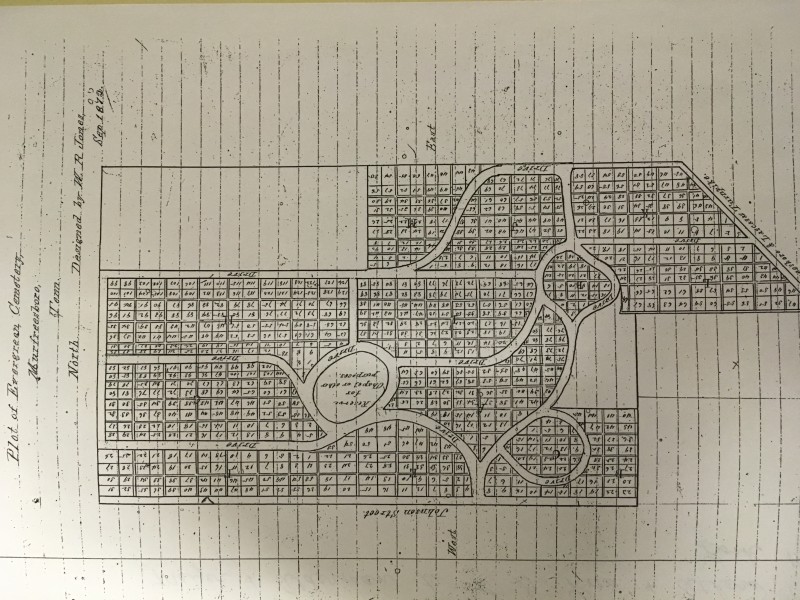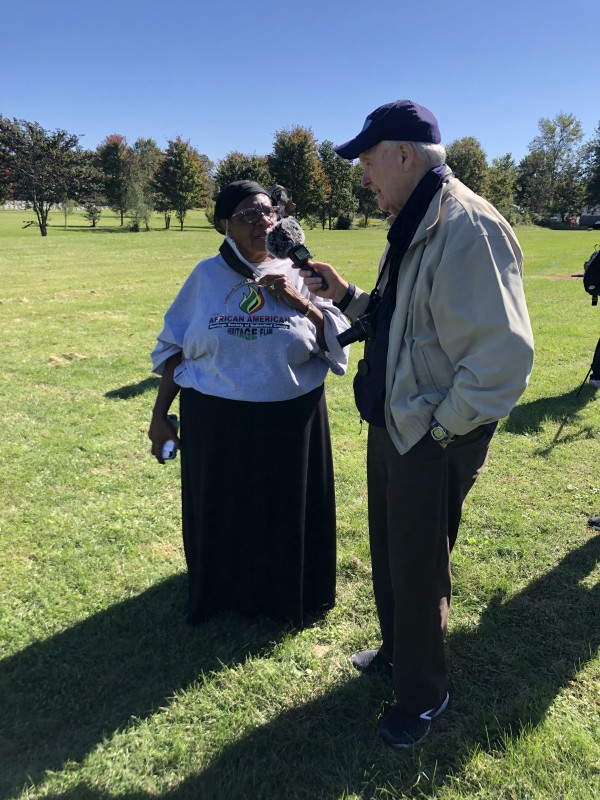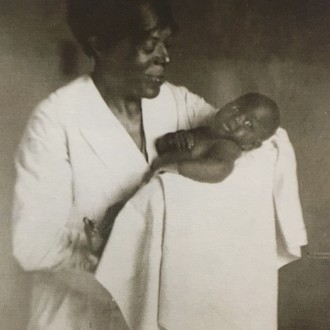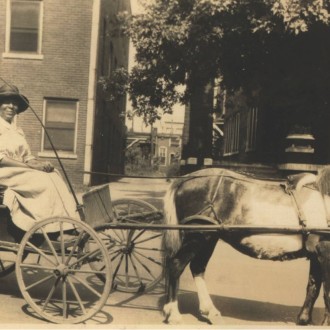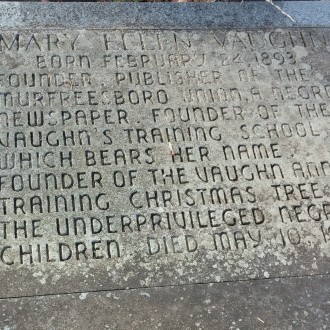Evergreen Cemetery Section M
519 Greenland Drive Murfreesboro, TN 37130
From 1814 until 1872, this land was part of an extensive holding owned by the Maney family. With looming financial hardship following the Civil War, Dr. James Maney sold twenty acres of his nearly 1,500 acre plantation to the City of Murfreesboro in 1872 to become a new cemetery. This cemetery was first called “Oaklands Cemetery” in 1872, though it’s name was eventually changed to “Evergreen Cemetery” in 1873 by the cemetery’s Board of Trustees.
Accepted oral tradition states that Evergreen Cemetery evolved from what was previously the burial ground for those enslaved by the Maney family. In section M of the cemetery is a large, open field. Within this area lie the unmarked and mostly unknown graves of the enslaved Africans who toiled on the grounds of Oaklands and finally came to rest here until 1872. Near the center of the area is a weathered tin obelisk that is believed to be an early memorial for an enslaved person or persons. The base of the obelisk reads “Carrie,” although the rest of the text is too weathered to read. There are a some headstones in this area of the cemetery, marking the burial site of individuals such as Mary Ellen Vaughn. Vaughn was an influential African American woman in Murfreesboro; she was a Tuskegee Institute graduate, one of the first African American public health nurses, founder of the first newspaper for African-Americans in this area, the Murfreesboro Union, and founder of the Vaughn’s Training School on South Highland. The Maney family plot in section H includes the graves of Rachel Adeline Cannon Maney, Lewis Meredith Maney, and many of their relatives.
Evergreen Cemetery was designed as a rural park cemetery with winding roadways, shaded lawns, flowers and trees, and attractive, decorative ornaments. Today, Evergreen covers over 100 acres of land and contains more than 200,000 graves. Some of the graves pre-date 1872, indicating that the remains were reinterred here after Evergreen opened. There are a large number of death dates between the years of 1935 and 1937 when an influenza epidemic swept through the Murfreesboro community, killing many of its citizens.
On Saturday, June 24, 2023, through a partnership between the African American Heritage Society of Rutherford County Tennessee and Oaklands Mansion, a monument was created and unveiled. This monument is dedicated to the lives of the many enslaved individuals who are likely buried in unmarked graves below section M. The Department of Geosciences at Middle Tennessee State University also scanned portions of section M. They found many unmarked graves near the center of section M, though more scanning remains to be done. This monument can be seen by the public in Evergreen Cemetery today. More information regarding the monument and its unveiling, the Department of Geosciences ground penetrating radar scans, information about figures such as Mary Ellen Vaughan, and more can be found below.
To learn more about, or to join, the African American Heritage Society of Rutherford County visit their Facebook page: https://www.facebook.com/aahsrctn/or website: https://www.aahsrc.org/
Ground Penetrating Radar (GPR) Scanning
On October 18, 2021 members of the African American Heritage Society of Rutherford County, Rutherford County Archeological Society, Oaklands Mansion and other community members witnessed the radar scanning of Evergreen Cemetery Section M performed by Middle Tennessee State University Geoscience Department students under the direction of Dr. Joe Collins. The results will indicate the location of unmarked graves including individuals believed to have been enslaved by the Maney family of the Oaklands Planation.
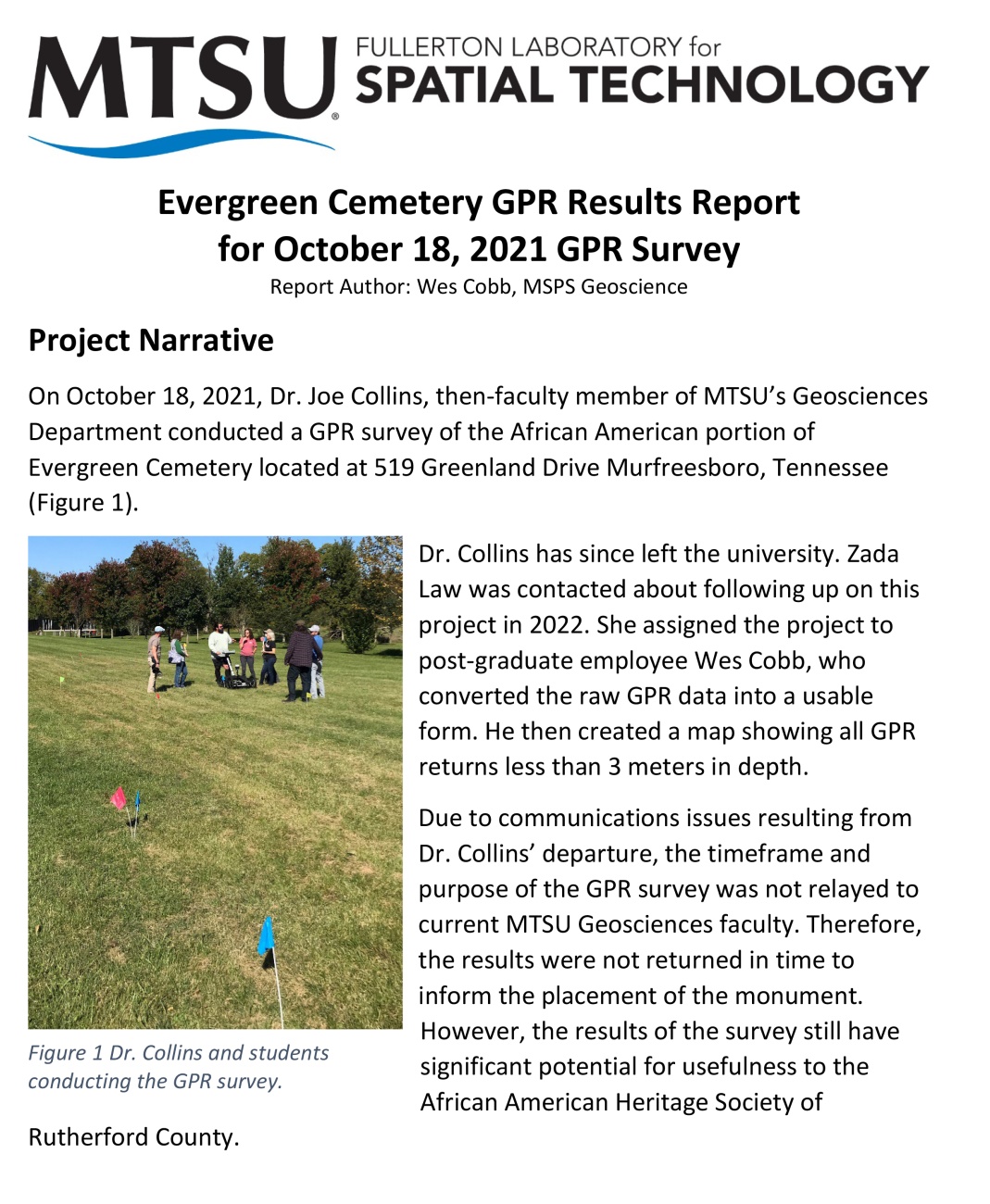
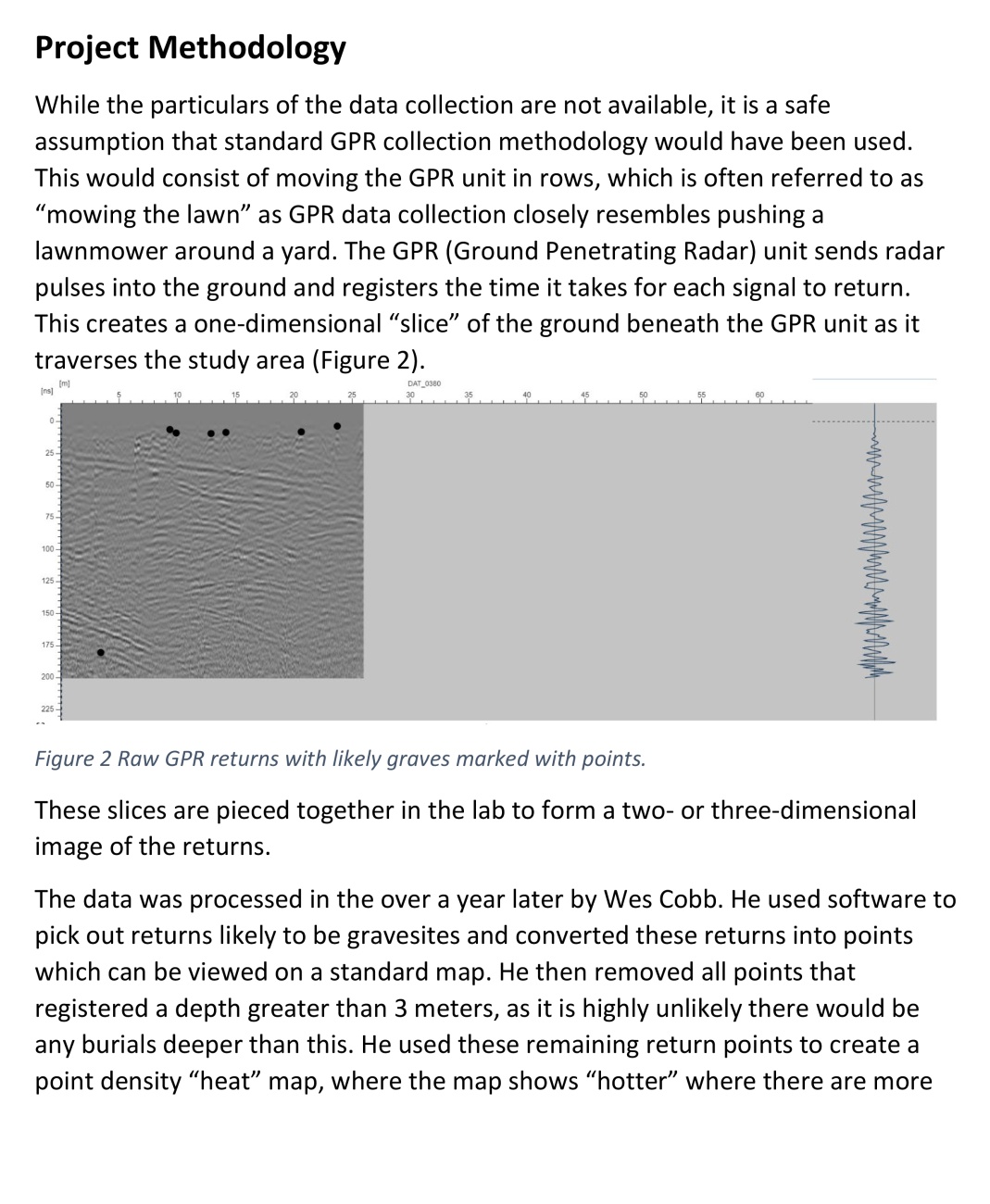
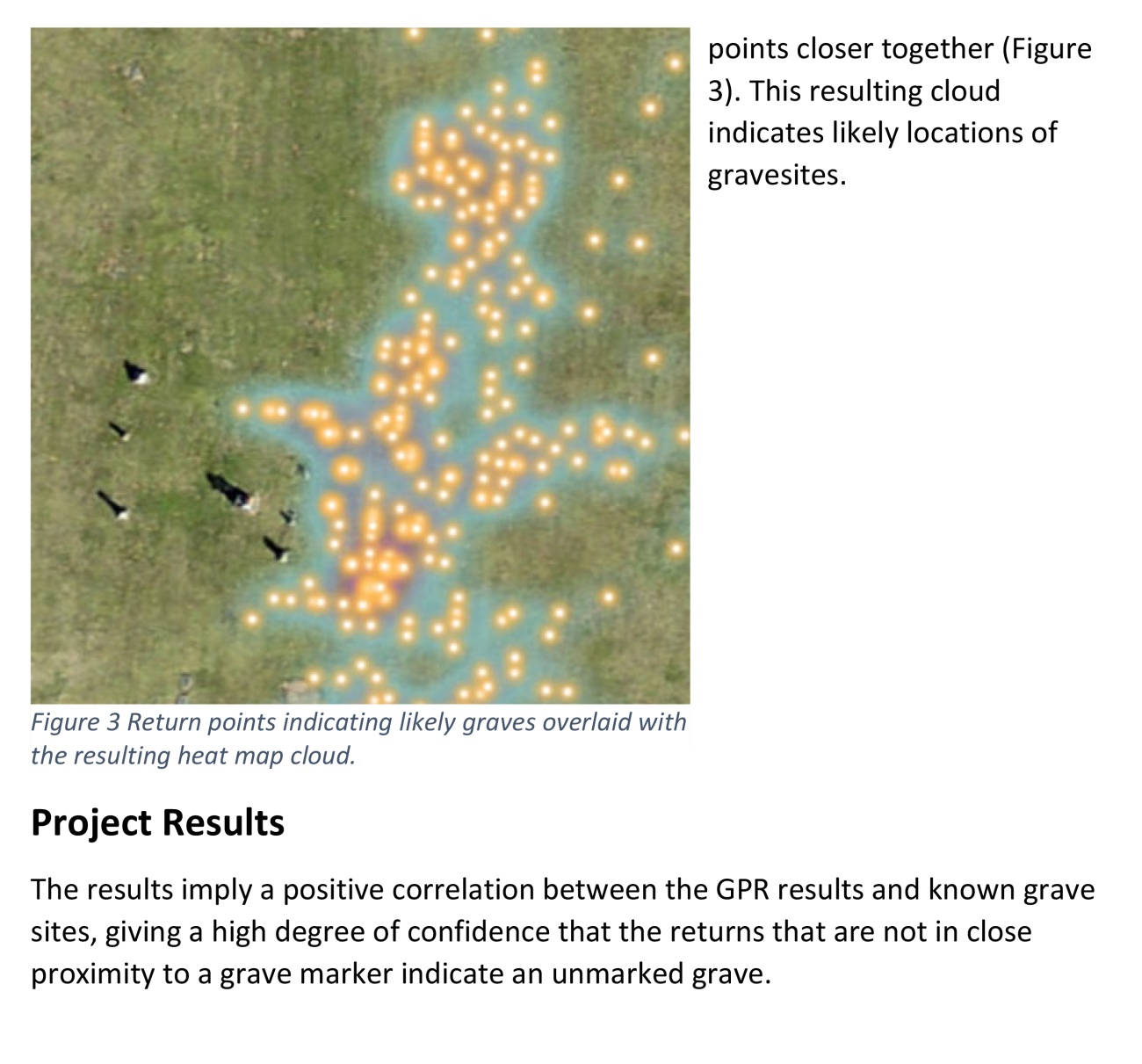
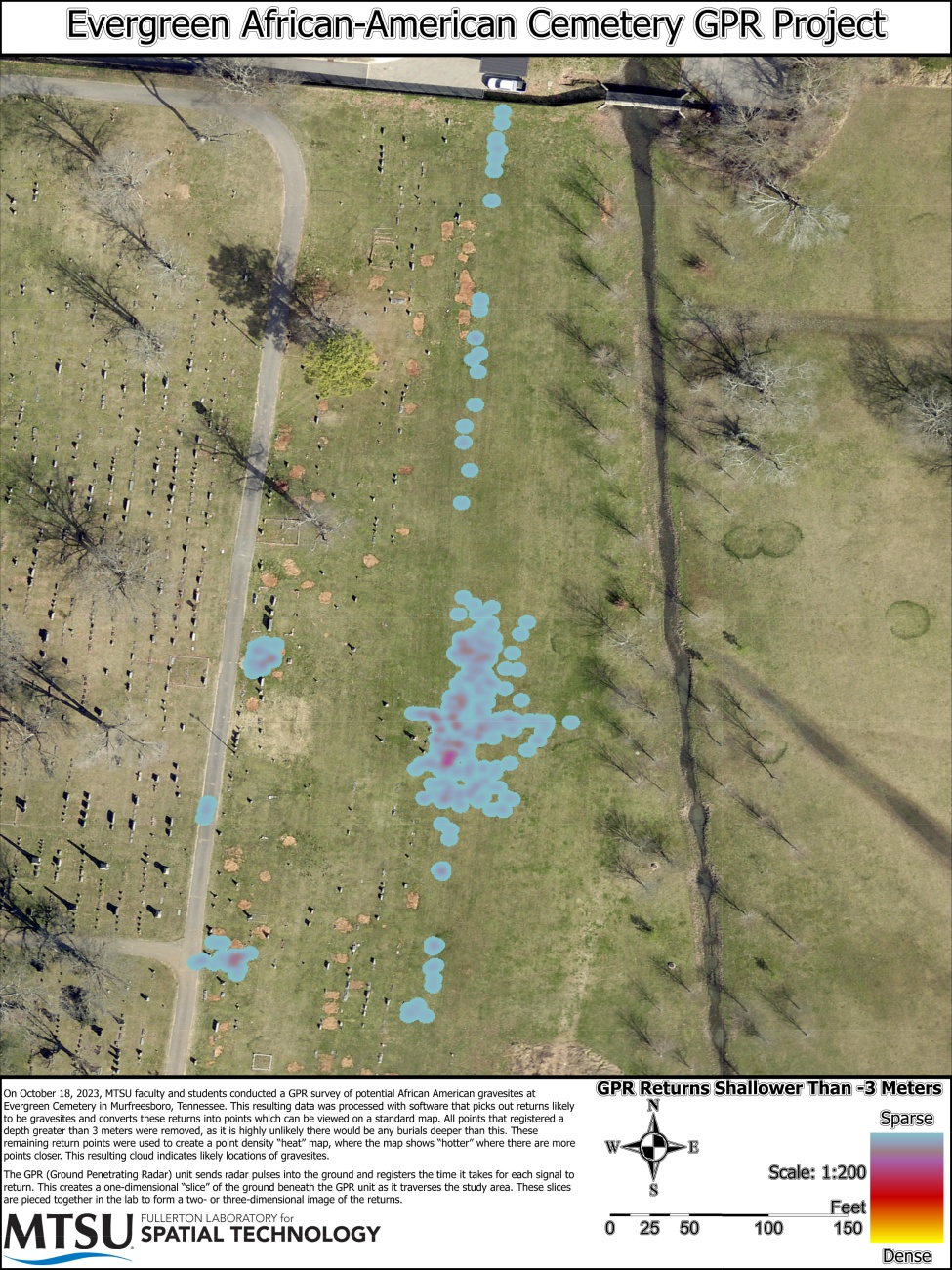
Download the Above Images as a PDF
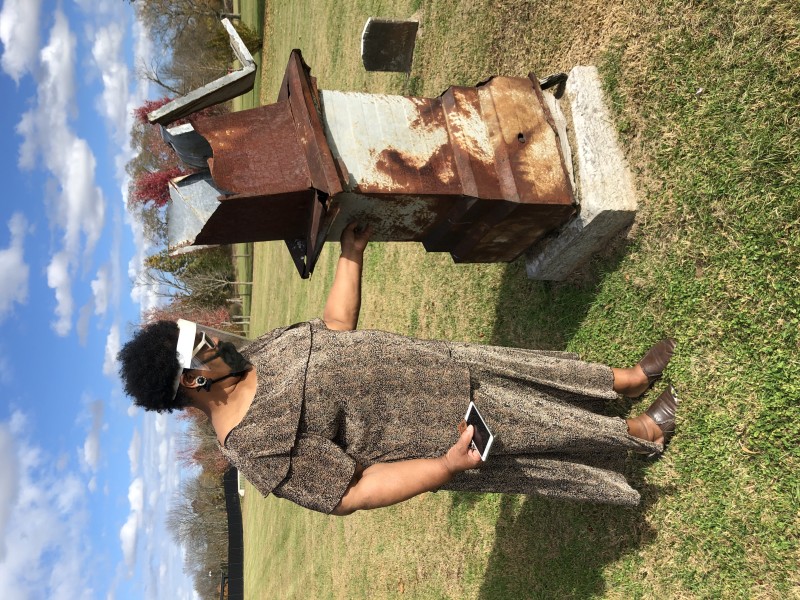
Mary Watkins, President of the African American Heritage Society of Rutherford County stands near the center of section M in Evergreen Cemetery.
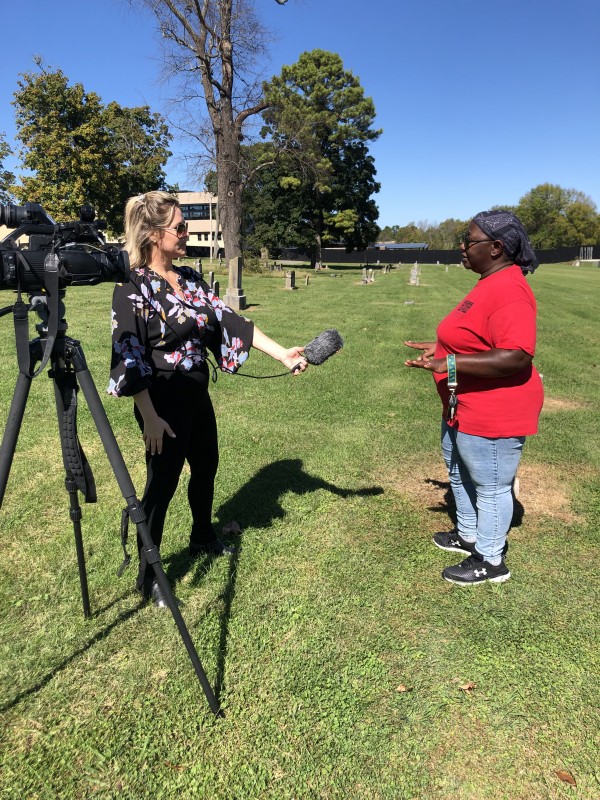
Murfreesboro City TV’s Michael Linn White interviews Wilma McLean of the African American Heritage Society of Rutherford County.
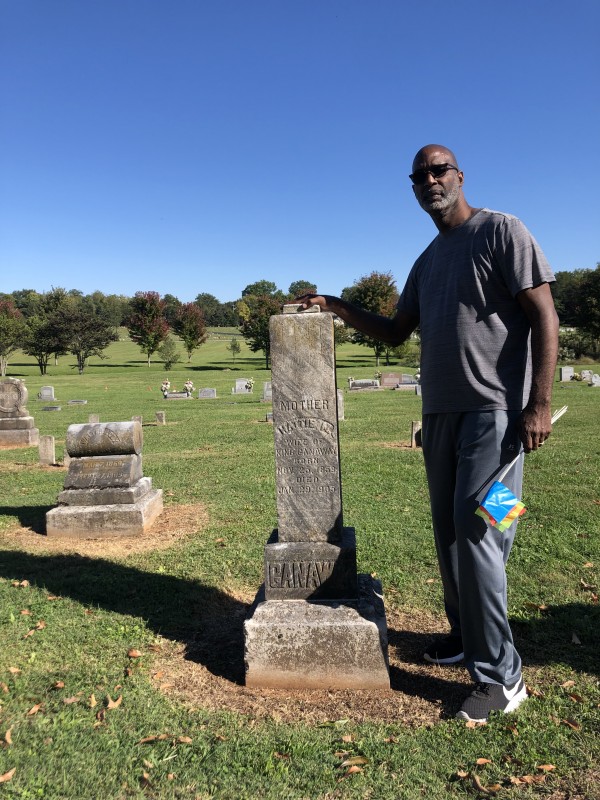
Daryl Webb stands at his great, great grandmother Hattie Murfree Ganaway’s grave in the oldest section of Evergreen Cemetery, Section M. The newest section of Evergreen Cemetery is visible in the extreme background.
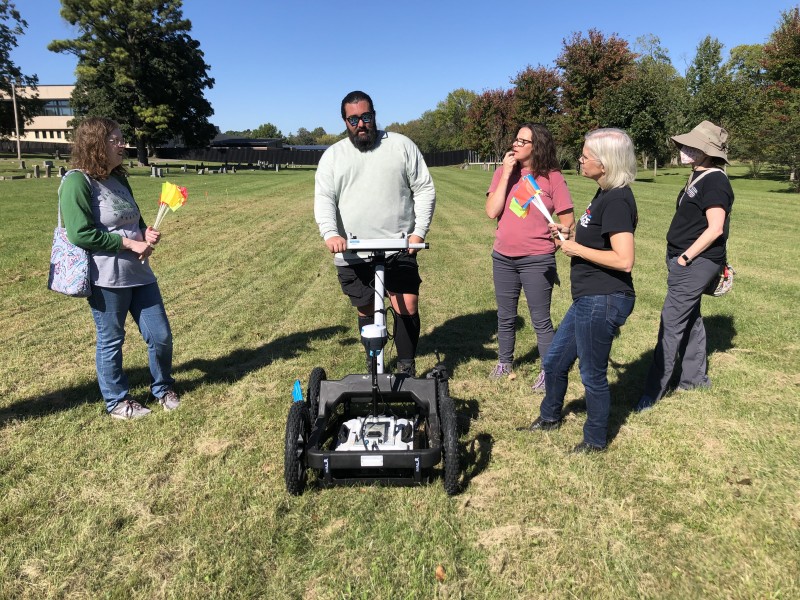
GPR Scanning of Evergreen Cemetery Section M on October 18, 2021. The Murfreesboro Police Station seen in the background boarders Evergreen Cemetery Section M.
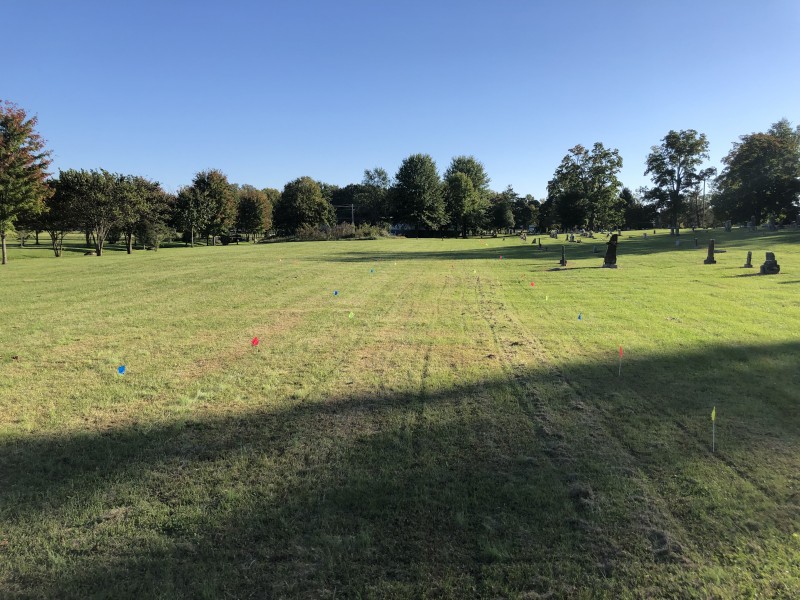
Evergreen Cemetery Section M after radar scanning on October 18, 2021. Flags indicate unmarked graves. The cemetery shop building is barely visible in the background. Near the center of the area is a weathered tin obelisk that is believed to be an early memorial for an enslaved person or persons. The base of the obelisk reads “Carrie,” although the rest of the text is too weathered to read.
Mary Ellen Vaughn
“Closer to the street, in a grave which is not unmarked, is buried Mary Ellen Vaughn, a Tuskegee Institute graduate. Ms. Vaughn was one of the first African-American public health nurses; founder of the Murfreesboro Union, the first newspaper for African-Americans in this area, founder of Vaughn’s Training School on South Highland and is buried along with her uncle.
Mary Ellen Vaughn was an entrepreneur and skilled nurse who used her talents to promote the interests of Murfreesboro’s African American community in the first half of the 20th century.
Vaughn’s extensive education included Tuskegee Institute, Chicago Business College and Tennessee A&I State College. She established the African American newspaper Murfreesboro Union in 1920 and Vaughn’s Training School in 1933. During the 1920s, she worked as a nurse in the Commonwealth Fund’s nationally significant effort to improve rural public health in Rutherford County. Her school provided home health-care instruction and adult education, and served as a clearinghouse for civil rights information and activism. Murfreesboro’s Vaughn Street continues to honor her memory.” (Mike Pirtle, The Post, March 15, 2009)
VAUGHN’S TRAINING SCHOOL BLACK 1933-1951 was located in the home of Mary Ellen Vaughn on the east side of South Highland Street in Murfreesboro. The site is now the intersection of Vaughn Street and South Highland Ave.
Mary Ellen Vaughn, a graduate of Tuskegee College in Alabama and the holder of a bachelor’s degree 1931 and a master’s degree 1950 from Tennessee A&I College in Nashville, was the founder and teacher. Mrs. Sadie Jones taught singing and piano; Mrs. Martha Kimbro, sewing.
The school provided basic and vocational education for Black adults in the community. Besides basic subjects, vocational courses such as typing, cosmetology, and sewing were offered. Billy Haynes, a former grocer, was a student. He recalls that Miss Vaughn taught “the ABC’s first, then printing, writing, and reading. Other subjects included arithmetic, history, and geography. School cost 25 cents each week.”
Stephen Driver in a 1971 MTSU master’s thesis wrote, “This school was established because of the requirements of literacy to vote.” The purpose of the school in Mary Ellen Vaughn’s own words was “to elevate the race to high ideals, to lift them up and encourage them to live better lives.” The school closed in 1951 because of Mary Ellen Vaughn’s ill health.
Mary Ellen Vaughn was born in Montgomery, Alabama, in 1893. She was a teacher at Tallassee, Alabama, in 1900, and in Macon County, Alabama, in 1901-1902. In 1920, she moved to Murfreesboro to care for her Uncle William Bibb and to do private teaching. She also worked as a public health nurse, having taken post-graduate work in nursing at Tuskegee Institute, and was a maid and possibly a nurse for the Faircloth family. She also published monthly The Murfreesboro Union, a four-page newspaper which “contained a minimal amount of advertising and generally dealt with social events in the Black community.” She died in 1953 “one year before the Brown school decision that altered forever the role of the Black in American society. But for more than 30 years she had worked to improve the lot of the Black person in Murfreesboro through education and personal attention.”
SOURCES: “Mary Ellen Vaughn,” The Daily News Journal, June 29, 1975; Jim Leonhirth and Anne Petty, “She Worked to Build a Better Race,” The Daily News Journal, Feb. 17, 1980; Mike Pirtle, The Post, March 15, 2009; *R. T. Butler, d. April 5, 1986; *Willa K. Kimbro Foster.
Death Record Transcription
Name: Mary Ellen Vaughn
DOD: May 10, 1953
Race: C
Sex: F
Marital status: Single
DOB: Feb. 24, 1893
Usual Residence: state TN county Rutherford civil dist. 13
City or Town: Murfreesboro
Length of stay in this place: 30 yrs.?
Street address: 413 East State St.
Birthplace: Montgomery, Alabama
Father: Eurastas Vaughn
Mother: Rebecca Rogers
Informant: Mattie B. Barlow, Montgomery, Alabama
COD: ruptured gall bladder with peritonitis
Burial Date: May 13, 1953
Cemetery: Evergreen
Location: Murfreesboro, TN.
Funeral Director: H. Preston Scales and Sons
Location: Murfreesboro, TN.

